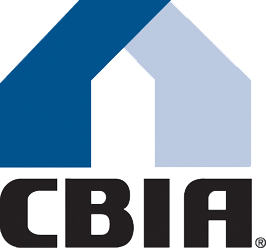Image from Denalect Alarm Company
by Phillip B. Burum, Executive Vice President, Diversified Pacific,
President, Building Industry Association (BIA) Baldy View Chapter
Today’s homes are built to the highest standards with state-of-the-art materials, coatings and designs by the most well-trained and sophisticated building professionals in history; yet even with all of these advances, our sunny Mediterranean climate means today’s homeowners have to take care to protect their home from harmful pests.
Spring is the season when most homeowners will be looking to freshen up their homes, both inside and out. It is the time to renew your landscaping, clean out your closets and get those pesky home improvements off the “honey do” list. Before you send out the invitations to your season opening barbeque, however, you need to be sure you have also addressed pest control. Pests of varying shapes and sizes present unique risks to their target. From rodents carrying disease and allergens to termites that literally devour your home, addressing these threats early and often is a necessity for the preservation and enjoyment of your home. In fact, according to the National Pest Management Association, termites alone have been estimated to cause nearly $5 billion worth of damage in the U.S. every year. So here is a checklist to help you protect your investment and ensure a healthy spring and summer outdoors.
For starters, you should consider retaining a pest control contractor for monthly inspections and preventative treatments around your home. For around $40.00 per month, you can save yourself thousands in damages. If you do decide to retain a professional, you will still need to do your part to protect your home so take a few notes and get started.
Some pests can survive a long time without food, but need water more often to survive. To shut off their supply, check for leaky faucets, dishwashers and washing machines immediately. Be sure to empty flowerpots and plant stands of excess water.
Inspect your home’s exterior such as rain gutters for any areas where debris can accumulate and make sure they are clean and secure. Especially in older homes, rain gutters that are not secure can often direct rain into the wrong places and create issues for the rest of the structure.
Trim back any plants, trees or shrubs that make contact with the home or could grow to touch the home. Plants replenished by rain followed by warm sunny months such as we experience here in the Baldy View Region grow more rapidly than in other climates, so check them periodically throughout the summer months.
Cut back any landscaping that might obscure unwanted intruders and provide a gateway for pests. Rake debris and mulch away from the base of your home and keep it to a minimum to allow for adequate drainage.
For older homes with wood or composite shingles, replace any rotted or decaying shingles.
Seal any cracks and openings along baseboards, behind sinks and around pipes and windows.
Repair holes in door and window screens or replace worn screens.
Carefully check any points where utility lines enter the house. Address any damage to the foundation and windows that might have occurred. Make sure attics and crawlspaces are well ventilated and dry.
If you live in our rural or mountain areas or own an older home, have a Chimney Safety Institute of America (CSIA) Certified chimney sweep inspect your chimney and fireplace. You can find a CSIA-Certified chimney sweep by visiting www.csia.org on the internet.
If you keep stacks of firewood outside of your home, keep them neat and place them away from the house and off the ground.
Remember to keep a tight lid on all trash and recycling containers and empty them often. Especially if you buy in bulk, store food such as cereals, flour and sugar in plastic containers rather than in their original packaging, especially in warm weather.
So, whether you’re a new homeowner looking to personalize your state-of-the-art new home with additional landscaping, adding landscaping to enhance the value of an existing home or just are looking for a comfortable summer enjoying your home, these simple steps now can save you a lot of headache and money down the road from unwanted visitors. You can find more information about pest-free protection on EPA’s website at www.epa.gov/pesticides on the web.
The BIA Baldy View Chapter seeks to advance the opportunity to attain the American Dream of home ownership. For additional information on homebuying, home improvements or the benefits of homeownership, go to www.biabuild.com on the web.

































